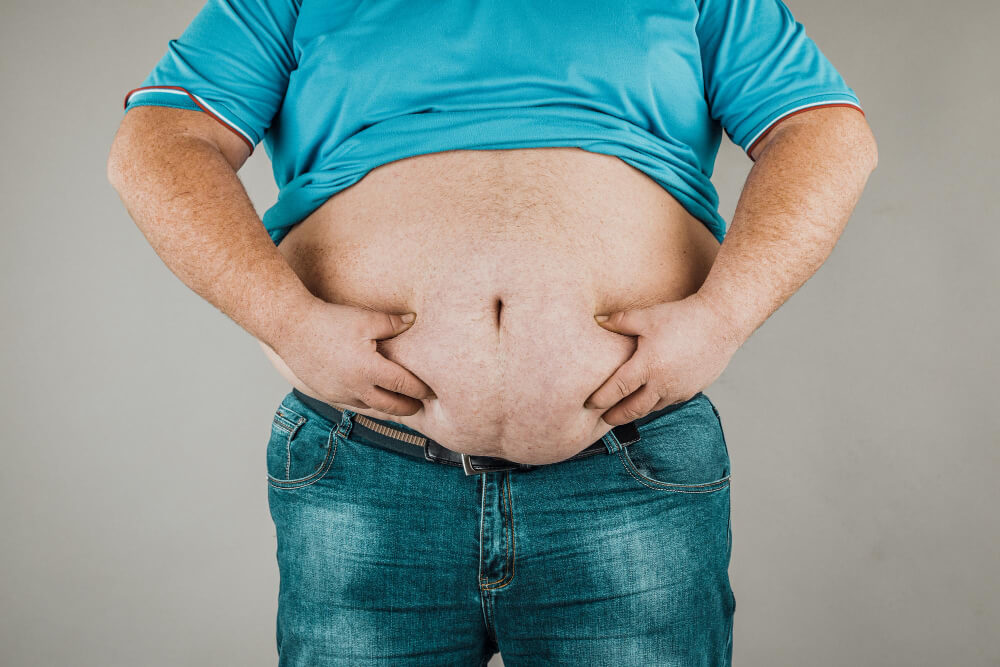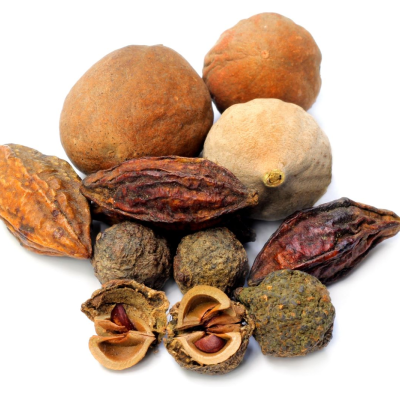Obesity is a medical condition characterized by excessive accumulation of body fat, leading to a negative impact on health. It is typically defined using the Body Mass Index (BMI), where a BMI of 30 or higher indicates obesity.
Causes of Obesity
Lifestyle Factors
- Sedentary behaviour
- High-calorie diets rich in sugar and fats
- Lack of physical activities
Genetic Factors
- Family history of obesity
- Genetic predisposition affecting metabolism and fat storage
Medical Conditions
- Hypothyroidism
- Polycystic Ovary Syndrome (PCOS)
- Cushing's syndrome
Medications
- Steroids
- Antidepressants
- Antipsychotics
Psychological Factors
- Emotional eating
- Stress and depression
Environmental and Socioeconomic Factors
- Limited access to healthy foods
- Poor sleep patterns
Types of Obesity
Android Obesity (Apple-shaped)
- Fat accumulation in the abdominal region.
- Associated with higher risks of heart disease and diabetes.
Gynaecoid Obesity (Pear-shaped)
- Fat accumulation around the hips and thighs.
- More common in women.
Generalized Obesity
- Overall increase in body fat across the body.
Central Obesity
- Specific accumulation of fat around the waistline.
Symptoms of Obesity
- Excess body fat
- Fatigue
- Breathlessness on exertion
- Snoring and sleep apnoea
- Joint pain, especially in the knees and back
- Stretch marks and skin conditions like acanthosis nigricans
Diagnosis of Obesity
BMI Calculation
- Underweight: BMI < 18.5
- Normal weight: BMI 18.5–24.9
- Overweight: BMI 25–29.9
- Obesity: BMI ≥ 30
Waist-to-Hip Ratio (WHR)
- Indicator of central obesity.
Skinfold Thickness
Measurement of subcutaneous fat.
Blood Tests
- Lipid profile, blood glucose, and thyroid function tests to identify metabolic issues.
Imaging Studies
- Ultrasound, CT scan, or MRI to assess fat distribution.
Risks and Complications of Obesity
Cardiovascular Diseases
- Hypertension, heart disease, and stroke.
Diabetes
- Type 2 diabetes due to insulin resistance.
Joint Problems
- Osteoarthritis due to increased stress on joints.
Respiratory Issues
- Sleep apnoea and obesity hypoventilation syndrome.
Mental Health
- Depression and low self-esteem.
Cancer
- Increased risk of cancers such as breast, colon, and endometrial cancer.
Ayurvedic Perspective on Obesity
Understanding Obesity in Ayurveda (Sthaulya or Medoroga)
In Ayurveda, obesity is primarily caused by an imbalance in Kapha dosha and an excess of Meda Dhatu (fat tissue). Factors like sedentary lifestyle, excessive consumption of Kapha-aggravating foods, and lack of proper digestion (Agni) contribute to the condition.
Ayurvedic Treatment for Obesity
Detoxification (Panchakarma)
- Vamana (Therapeutic Emesis): To expel Kapha dosha.
- Virechana (Purgation): To remove toxins from the digestive tract.
- Udvarthana (Herbal Powder Massage): To reduce fat and improve circulation.
Dietary Guidelines (Ahara)
- Kapha-pacifying Diet: Light, warm, and dry foods.
- Include: Barley, green leafy vegetables, ginger, and black pepper.
- Avoid: Dairy, sweets, and processed foods.
Lifestyle Modifications (Vihara)
- Regular exercise, yoga, and pranayama to balance Kapha.
- Adequate sleep and stress management.
Yoga for Obesity
- Asanas: Surya Namaskar, Trikonasana, and Bhujangasana.
- Pranayama: Kapalabhati and Bhastrika.
Home Remedies
- Drink warm water with lemon or water with honey in the morning.
- Use spices like turmeric, cinnamon, and cumin in daily cooking.
Herbs and Formulations
Guggulu
Enhances metabolism and reduces fat.
Triphala
Improves digestion and detoxifies.
Punarnava
Acts as a diuretic and reduces water retention.
Vrikshamla (Garcinia cambogia)
Reduces fat accumulation.
Medohar Rasayana
Specific for reducing Meda Dhatu.
Obesity is a multifactorial condition with serious health implications. From an Ayurvedic perspective, balancing Kapha dosha, improving digestion, and detoxifying the body are key to managing obesity. Combining modern diagnostics with Ayurvedic treatments offers a holistic approach to address this growing concern.








